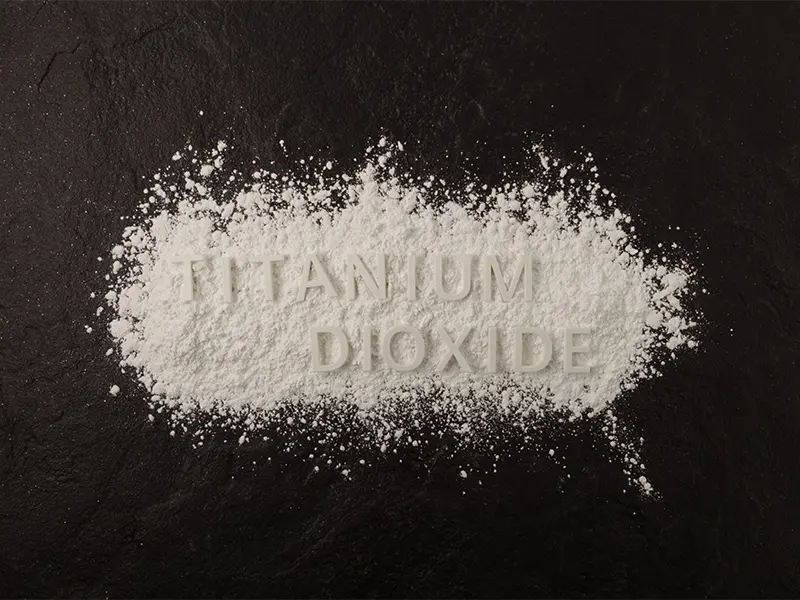What are the uses of titanium dioxide?

Titanium dioxide is an important inorganic chemical pigment, the main component of which is titanium dioxide. There are two production processes for titanium dioxide: sulfuric acid process and chlorination process. It has important uses in industries such as coatings, inks, papermaking, plastics and rubber, chemical fibers, and ceramics.
The particle size distribution of titanium dioxide is a comprehensive indicator, which seriously affects the performance of titanium dioxide pigment and product application performance. Therefore, the discussion of hiding power and dispersibility can be directly analyzed from the particle size distribution.
The factors affecting the particle size distribution of titanium dioxide are relatively complex. The first is the size of the original hydrolysis particle size. By controlling and adjusting the hydrolysis process conditions, the original particle size is within a certain range. The second is the calcination temperature. During the calcination of metatitanic acid, the particles undergo a crystal transformation period and a growth period. Control the appropriate temperature to keep the growing particles within a certain range. Finally, the product is crushed. Usually, the Raymond mill is modified and the analyzer speed is adjusted to control the crushing quality. At the same time, other crushing equipment can be used, such as: universal mill, air flow mill and hammer mill.
Titanium dioxide has three crystal forms in nature: rutile, anatase and brookite. The brookite belongs to the orthorhombic system and is an unstable crystal form. It will transform into rutile at above 650°C, so it has no practical value in industry. The anatase is stable at room temperature, but it will transform into rutile at high temperature. Its transformation intensity depends on the manufacturing method and whether inhibitors or promoters are added during the calcination process.
Titanium dioxide (or titanium dioxide) is widely used in various structural surface coatings, paper coatings and fillers, plastics and elastomers. Other uses include ceramics, glass, catalysts, coated fabrics, printing inks, roofing granules and fluxes. According to statistics, the global demand for titanium dioxide reached 4.6 million tons in 2006, of which the coating industry accounted for 58%, the plastic industry accounted for 23%, the paper industry accounted for 10%, and others accounted for 9%. Titanium dioxide can be produced from ilmenite, rutile, or titanium slag. There are two production processes for titanium dioxide: sulfate process and chloride process. The sulfate process is simpler than the chloride process and can use low-grade and relatively cheap minerals. Today, about 47% of the world’s production capacity uses the sulfate process, and 53% of the production capacity uses the chloride process.
Titanium dioxide is considered to be the best white pigment in the world and is widely used in coatings, plastics, papermaking, printing inks, chemical fibers, rubber, cosmetics and other industries.
Titanium dioxide (titanium dioxide) has stable chemical properties and does not react with most substances under normal circumstances. In nature, titanium dioxide has three types of crystals: brookite, anatase and rutile. The brookite type is an unstable crystal form with no industrial utilization value. The anatase type (A-type) and the rutile type (R-type) both have stable lattices and are important white pigments and porcelain glazes. Compared with other white pigments, they have superior whiteness, tinting power, hiding power, weather resistance, heat resistance, and chemical stability, especially non-toxicity.
Titanium dioxide is widely used in coatings, plastics, rubber, ink, paper, chemical fibers, ceramics, daily chemicals, medicine, food and other industries.
